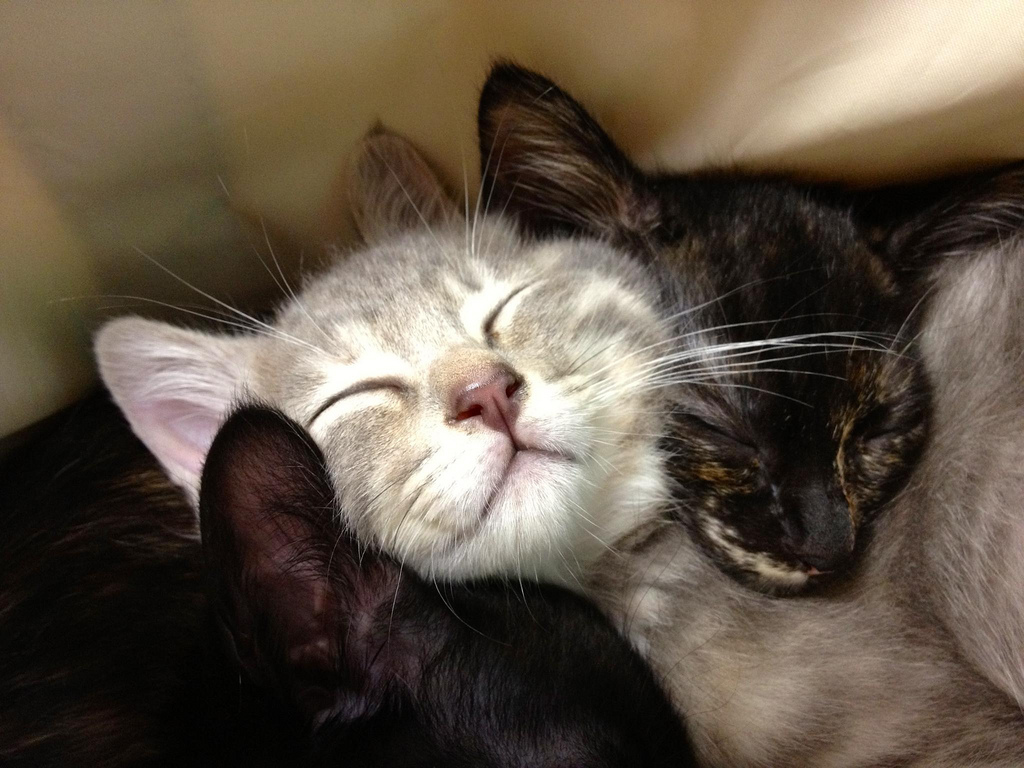Water, water, everywhere, AND any drop to drink
Bill gates has recently demonstrated a technology that can turn
sewage
Sewage into Water -
The processor wouldn’t just keep human waste out of the drinking water; it would turn waste into a commodity with real value in the marketplace.
The Omniprocessor solves that problem.
Through the ingenious use of a steam engine, it produces more than enough energy to burn the next batch of waste.
In other words, it powers itself, with electricity to spare.
The next-generation processor, more advanced than the one I saw, will handle waste from 100,000 people,
producing up to 86,000 liters of potable water a day and a net 250 kw of electricity.
into water and energy, Special
water bottles
 Water bottles -
The LIFESAVER® bottle is the world’s first water filter bottle to filter out all viruses, bacteria, cysts, parasites,
fungi and all other microbiological waterborne pathogens from water.
Water bottles -
The LIFESAVER® bottle is the world’s first water filter bottle to filter out all viruses, bacteria, cysts, parasites,
fungi and all other microbiological waterborne pathogens from water.
The LIFESAVER bottle works instantly, and operates without the aid of any foul tasting chemicals like iodine or chlorine or the
need for any power, UV light or mechanically advanced disinfection.
with filters can be used to clean dirty water.
Sea water can already be turned into drinking water in a cost effective way.
The world’s largest and cheapest reverse-osmosis desalination plant is up and
running
Mega Scale Desalination -
The new plant in Israel, called Sorek, was finished in late 2013 but is just now ramping up
to its full capacity; it will produce 627,000 cubic
meters of water daily, providing evidence that such large desalination facilities are practical.
In development are advanced membranes made of atom-thick sheets of carbon,
which hold the promise of further cutting the energy needs of desalination plants.
in Israel today
Those plants account for 40 percent of Israel’s water supply. By 2016, when additional plants will be running,
some 50 percent of the country’s water is expected to come from desalination.
China plans to quadruple
desalination by 2020.
In California, which is suffering a drought, construction is 25 percent complete on a $1 billion project to bring 50 million gallons of freshwater a day from the sea and pour it into a water system that serves 3.1 million people. Following on from the section on Energy, with there being abundant cheaper energy, this could only increase fresh water production.
Food
The reason there is a huge water shortage in places like California
is because the vast majority of water is used in
agriculture.
 Agriculture -
In most locations, more than 90% of water consumption is agricultural.
Three difficult, but critical, imperatives should be addressed if we are to confront the global water crisis head on
Who gets how much when there isn’t enough? Governments must be willing to plan and lead. The recognition that natural capital matters.
But there are now more technologies in development which can reduce
this water wastage in growing food.
Farming drones
Agriculture -
In most locations, more than 90% of water consumption is agricultural.
Three difficult, but critical, imperatives should be addressed if we are to confront the global water crisis head on
Who gets how much when there isn’t enough? Governments must be willing to plan and lead. The recognition that natural capital matters.
But there are now more technologies in development which can reduce
this water wastage in growing food.
Farming drones
 Farming drones -
Relatively cheap drones with advanced sensors and imaging capabilities
are giving farmers new ways to increase yields and reduce crop damage.
can scan fields autonomously for areas
which need water to optimise water usage.
Advanced
genetic tools
Supercharged Photosynthesis -
It can be a decade or more before even simple crop modifications reach farmers, let alone changes
as complex as re-engineering how plants carry out photosynthesis.
Farming drones -
Relatively cheap drones with advanced sensors and imaging capabilities
are giving farmers new ways to increase yields and reduce crop damage.
can scan fields autonomously for areas
which need water to optimise water usage.
Advanced
genetic tools
Supercharged Photosynthesis -
It can be a decade or more before even simple crop modifications reach farmers, let alone changes
as complex as re-engineering how plants carry out photosynthesis.
But once scientists solve the C4
puzzle in a plant such as rice, they hope, the method can be extended
to dramatically increase
production of many other crops, including wheat, potatoes,
tomatoes, apples, and soybeans.
could help boost crop yields and feed billions more people.
You can cut down on water usage substantially by using hydroponics. The world's largest indoor farm —25,000 square feet of futuristic garden beds nurtured by 17,500 LED lights in a bacteria-free, pesticide-free environment produces about 10,000 heads of fresh lettuce harvested each day. The unique "plant factory" is so efficient that it cuts food waste from the 30 to 40 percent typically seen for lettuce grown outdoors to less than 3 percent for their coreless lettuce. Models for Urban Agriculture exist which show a sustainable model for local food production Harvesting robots which can be used to pick the fruit/vegetable saving on human labour are continually getting better due to improving vision and grip techniques.
People can use Hydroponics to grow there own food at home,
hydroponically grown foods can be more nutritional because you can change the properties
of your food and monitor what goes into your food.
It pollutes less and can also allow you to grow more in less space because instead of the
2 dimensions that land farming is limited too, hydroponics can be grown using
the 3rd dimension(vertical farming), allowing a much higher land utilisation.
Some systems can be built using
3D printers
3D Printed Hydroponics -
3Dponics is an open-source initiative for the development of 3D models
that are used to build efficient and affordable gardens
and use advanced "smart"
systems
 Smart Hydroponics -
Niwa is the first fully automated hydroponic system that attends to all of
your plants’ needs so you don’t have to. Niwa will water them,
feed them and make sure they have optimal growing conditions 24/7.
Smart Hydroponics -
Niwa is the first fully automated hydroponic system that attends to all of
your plants’ needs so you don’t have to. Niwa will water them,
feed them and make sure they have optimal growing conditions 24/7.
You’ll never have to worry about your home garden again!
Just sit back, relax and watch your plants thrive, knowing that everything is being taken care of
can be bought with thanks to the internet of things that are connected to cloud,
which allow you to monitor and control heating, irrigation,
lighting, ventilation and climate all from a phone.
There are other
start ups
 Start ups -
Investors, meanwhile, see the macro trends: the world’s populations are becoming more urban; any innovations that can grow food with less water
and land than outdoor farming has potential to at least partially feed cities. The number of venture investments related to agriculture and food
this year is on pace to be more than twice the number of deals in 2012 and deal sizes are growing
and companies related to urban farming including a future
Xprize
Start ups -
Investors, meanwhile, see the macro trends: the world’s populations are becoming more urban; any innovations that can grow food with less water
and land than outdoor farming has potential to at least partially feed cities. The number of venture investments related to agriculture and food
this year is on pace to be more than twice the number of deals in 2012 and deal sizes are growing
and companies related to urban farming including a future
Xprize
 Urban Farming Xprize -
The goal of the Urban Farming XPRIZE is to remove some of the current significant
barriers, including light requirements; high energy demand and electricity costs;
high capital costs; and light, greenhouse gas, water, and nutrient pollution.
to produce healthy, sustainable crops that produce higher yields more
quickly and more often, and are close to the end consumer using marginalized land.
There is also another future
Xprixe
Urban Farming Xprize -
The goal of the Urban Farming XPRIZE is to remove some of the current significant
barriers, including light requirements; high energy demand and electricity costs;
high capital costs; and light, greenhouse gas, water, and nutrient pollution.
to produce healthy, sustainable crops that produce higher yields more
quickly and more often, and are close to the end consumer using marginalized land.
There is also another future
Xprixe
 No Soil Agriculture -
The winning team will create a cost-effective and safe way to sustainably grow food globally (either large- or small-scale),
regardless of soil, as well as address the issues of energy use, climate change, water scarcity, and ease of implementation.
to allow food to grow in poor ground and soil conditions,
food production will have to increase 70 percent by 2050 to feed an additional 2.3 billion
people while effectively using limited natural resources and adapting for climate change.
A staggering two billion people worldwide suffer from micro nutrient deficiency,
again an
Xprixe
No Soil Agriculture -
The winning team will create a cost-effective and safe way to sustainably grow food globally (either large- or small-scale),
regardless of soil, as well as address the issues of energy use, climate change, water scarcity, and ease of implementation.
to allow food to grow in poor ground and soil conditions,
food production will have to increase 70 percent by 2050 to feed an additional 2.3 billion
people while effectively using limited natural resources and adapting for climate change.
A staggering two billion people worldwide suffer from micro nutrient deficiency,
again an
Xprixe
 Micro-nutrients -
The winning team will develop the supplementation and fortification methods necessary
to durably bind micronutrients, such as iron to flour and/or
staple foods, in a way that survives storage, washing, and cooking temperatures.
plans to reward innovations which provide the world’s hungry with the means to stay nourished and healthy.
Micro-nutrients -
The winning team will develop the supplementation and fortification methods necessary
to durably bind micronutrients, such as iron to flour and/or
staple foods, in a way that survives storage, washing, and cooking temperatures.
plans to reward innovations which provide the world’s hungry with the means to stay nourished and healthy.
Vegetarian Meat and other new Foods
There's also the potential for lab grown meat,
the world's
first
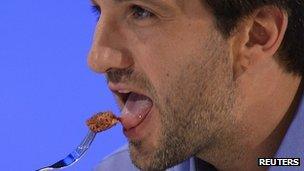 Lab-grown Burger-
Scientists took cells from a cow and, at an institute in the Netherlands,
turned them into strips of muscle that they combined to make a patty.
One food expert said it was "close to meat, but not that juicy" and another said it tasted like a real burger.
lab-grown burger has been cooked and eaten in London in 2013.
In 2012, it took 60 billion land animals to feed 7 billion humans.
If successful,
bioprinting
meat has huge advantages: 99% less land,
96% less water, 96% fewer greenhouse gases, and 45% less energy.
Lab grown meat could be a sustainable way of meeting what they say is a growing demand for meat and
it may prevent even more environmental destruction for land.
In 2 years the c ost of lab-grown burger patty has
dropped from $325,000 to $11.36,
if the trend continues eventually it could be cheaper, tastier,
healthier
Lab-grown Burger-
Scientists took cells from a cow and, at an institute in the Netherlands,
turned them into strips of muscle that they combined to make a patty.
One food expert said it was "close to meat, but not that juicy" and another said it tasted like a real burger.
lab-grown burger has been cooked and eaten in London in 2013.
In 2012, it took 60 billion land animals to feed 7 billion humans.
If successful,
bioprinting
meat has huge advantages: 99% less land,
96% less water, 96% fewer greenhouse gases, and 45% less energy.
Lab grown meat could be a sustainable way of meeting what they say is a growing demand for meat and
it may prevent even more environmental destruction for land.
In 2 years the c ost of lab-grown burger patty has
dropped from $325,000 to $11.36,
if the trend continues eventually it could be cheaper, tastier,
healthier
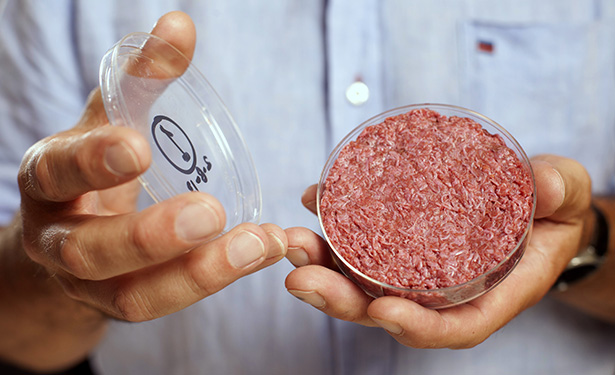 Lab-grown Burger-
No saturated fat, no heme iron, no growth hormone—cultured
meat seems to have many potential benefits.
If eating fat-free cultured meat would also mean a drop in calorie intake,
then there would be an added decrease in diabetes risk.
and lead to the end of battery farming.
This would also free up many resources such as land, food, energy and water
as less is needed to be keep livestock.
Advances in science could even allow us to produce
cow milk
Lab-grown Burger-
No saturated fat, no heme iron, no growth hormone—cultured
meat seems to have many potential benefits.
If eating fat-free cultured meat would also mean a drop in calorie intake,
then there would be an added decrease in diabetes risk.
and lead to the end of battery farming.
This would also free up many resources such as land, food, energy and water
as less is needed to be keep livestock.
Advances in science could even allow us to produce
cow milk
 Cow milk without cows-
Their goal is nothing less than to hack nature.
They’re trying to make cow’s milk cheese without the cow.
Cow milk without cows-
Their goal is nothing less than to hack nature.
They’re trying to make cow’s milk cheese without the cow.
However odd this project may seem,
it shows what soon will be possible with homegrown food science.
We’re approaching a world where the divide between the “natural” and the “artificial” collapses.
without the cow.
Consumers will ultimately be
able to
print
their own meat products – although much research and
development still remains, say American food academics.
The world faces critical food shortages in the near future as demand for meat is expected to increase by
more than two-thirds, according to the Food and Agriculture Organization of the United Nations.
Cultured Beef
 Cultured Beef-
Although Mark Post’s burger is only intended as a proof of concept and it will be a while before Cultured Beef appears
on supermarket shelves research already points to its potential.
represents the crucial first step in finding a sustainable alternative to meat production.
Cultured Beef-
Although Mark Post’s burger is only intended as a proof of concept and it will be a while before Cultured Beef appears
on supermarket shelves research already points to its potential.
represents the crucial first step in finding a sustainable alternative to meat production.
Machines can even create new recipes, IBM’s Watson using
cognitive computing
Cognitive Computing-
Watson is a cognitive technology that processes information more like a human than a computer –
by understanding natural language, generating hypotheses based on evidence and learning as it goes.
And learn it does.
Watson “gets smarter” in three ways: being taught by its users, learning from prior
interactions and by being presented with new information.
to create tasty BBQ sauce flavours, ice creams, drinks, soups, sandwiches and other
dishes and recipes. IBM recently release a
cookbook
IBM Chef Watson-
Remember that our Chef eats data, not real food!
These suggestions are based on the data behind recipes,
flavor compounds and human perception on what tastes yummy.
There's only about 65 foodstuffs in the mix, but they're considered
"greatest hits" that should work well in real life.
of all the recipes Watson created.
There are robots that can cook burgers,
Momentum machine’s
 Robot Burger Machine-
Our next revision will offer custom meat grinds for every single customer.
Want a patty with 1/3 pork and 2/3 bison ground after you place your order? No problem.
burger robot can slice toppings like
tomatoes and pickles immediately before it places the slice onto your burger, the robot is more consistent,
more sanitary, and can produce ~360 hamburgers per hour or one burger every 10 seconds.
There is also a prototype of a general cooking
"chef" robot
Robot Burger Machine-
Our next revision will offer custom meat grinds for every single customer.
Want a patty with 1/3 pork and 2/3 bison ground after you place your order? No problem.
burger robot can slice toppings like
tomatoes and pickles immediately before it places the slice onto your burger, the robot is more consistent,
more sanitary, and can produce ~360 hamburgers per hour or one burger every 10 seconds.
There is also a prototype of a general cooking
"chef" robot
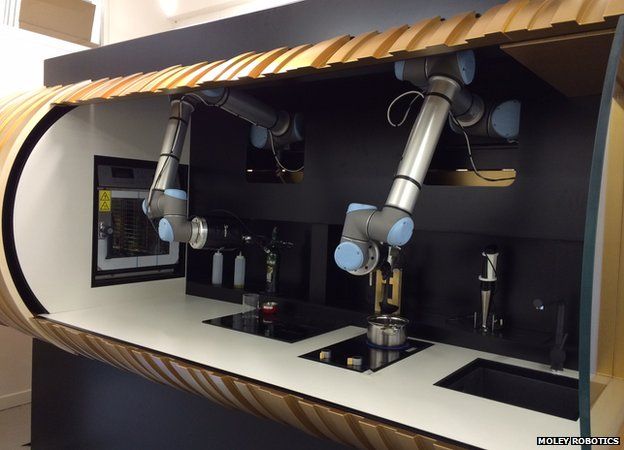 Robo-chef-
A key innovation is the hands. Produced by the Shadow Robot company, they use 20 motors,
24 joints and 129 sensors to mimic the movements of human hands.
Robo-chef-
A key innovation is the hands. Produced by the Shadow Robot company, they use 20 motors,
24 joints and 129 sensors to mimic the movements of human hands.
"You tell it to do something - whether it's a bit of prep or completing a whole dish
from start to finish - and it will do it. And it will do it the same every single time."
by a startup in London.
The product is still two years away from market. The startup want to make the unit slightly more compact,
and give it a built-in refrigerator and dishwasher.
The robot could then do everything from assembling and chopping all the ingredients, doing the cooking on the hob or in the oven, and finishing up by cleaning the dirty pans.
The goal is to produce a consumer version costing £10,000.
Go to top
About
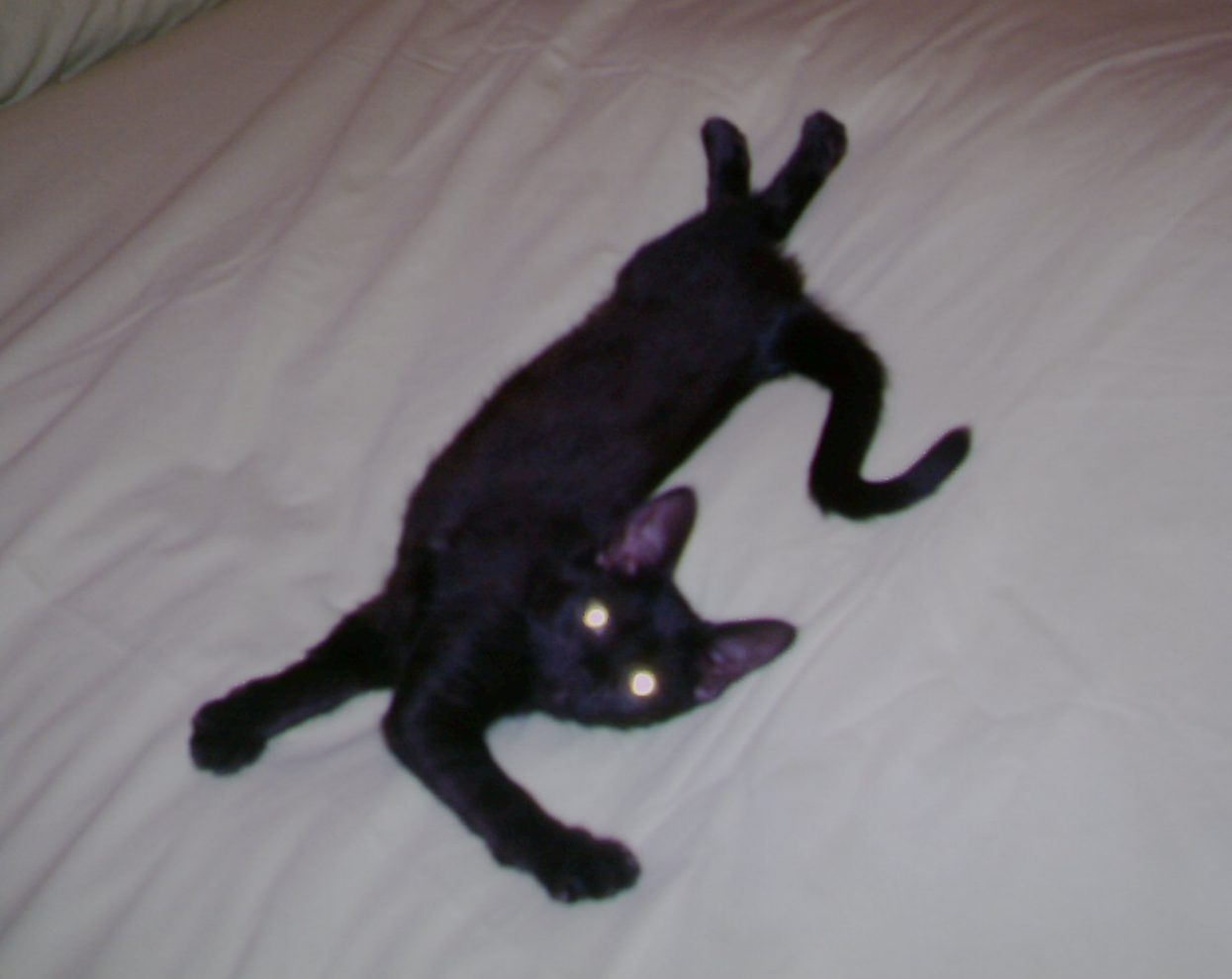 Website created by
Website created by Nathan Leigh
Website tools created by Mary Lou.
Picture of my cat Kizzy on the right.
